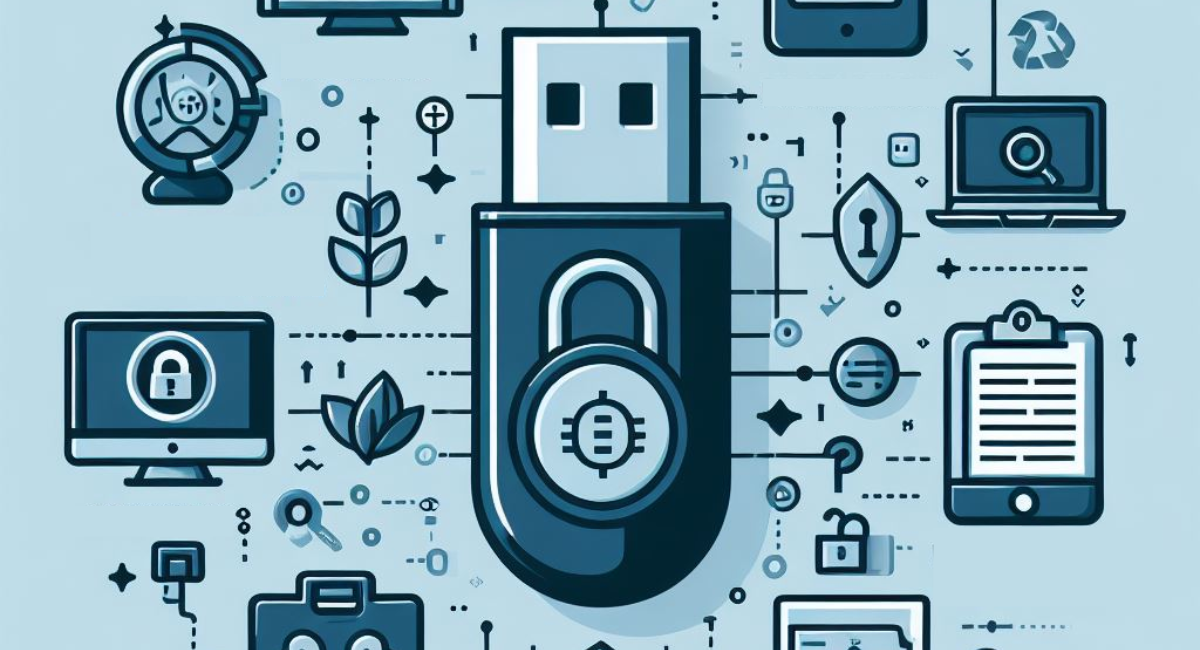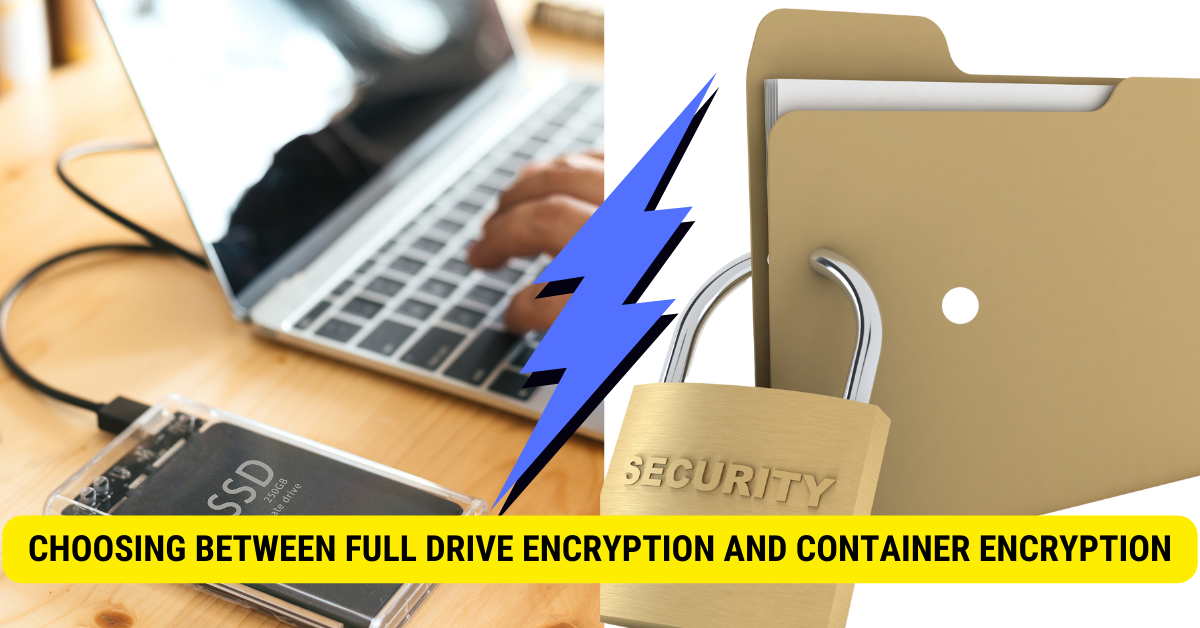To encrypt data on a USB flash drive, use encryption software that supports either Full Drive Encryption or Container Encryption. Install the software, follow the prompts to select your desired encryption method, set a strong password, and let the software encrypt the data on the USB drive.
Welcome, data enthusiasts, to a guide on how to protect your precious data with encryption on a USB flash drive! Whether super-secret government documents or cherished family photos, you deserve peace of mind knowing your data is safe and secure, even if your USB drive falls into the wrong hands. So let’s dive into the process step-by-step and ensure your data stays under lock and key.
Why Encrypt Your USB Flash Drive?

- Protect sensitive data from unauthorized access in case of loss or theft.
- Maintain privacy and security of personal information, financial records, and sensitive work documents.
- Safeguard against potential malware attacks and data corruption.
- Ensure data confidentiality even if the USB drive is accessed on another computer.
Methods To Encrypt Your USB Flash Drive
Using BitLocker in Windows 10
Here’s a straightforward method to encrypt your USB flash drive using BitLocker, the built-in encryption tool in Windows 10:
- Download BitLocker from their official website and install it on your computer.
- Plug in your USB device, and ensure it appears on your computer.
- Right-click on the USB drive’s name, select “Turn on BitLocker.”
- Choose a password for your USB drive, ensuring it’s strong and memorable.
- Save the recovery key to a secure location if you forget the password.
- Decide whether to encrypt the entire drive or just a portion of it.
- Opt for the new encryption mode for Windows 10 or compatible mode for older versions.
- Start the encryption process and wait for it to complete.
Using VeraCrypt for Cross-Platform Encryption
For those looking for cross-platform compatibility and more advanced encryption options, VeraCrypt is an excellent choice:
- Download VeraCrypt from their official website and install it on your computer.
- Format your USB drive to NTFS for optimal compatibility.
- Create a folder on your USB drive to store your encrypted data.
- Launch VeraCrypt and select “Create Volume” > “Create an encrypted file container.”
- Choose a standard VeraCrypt volume, select your USB drive, and create a strong password.
- Move your mouse around to generate more entropy for enhanced security.
- Let VeraCrypt encrypt the container, which may take some time, depending on the drive size.
Choosing Between Full Drive Encryption and Container Encryption

In the realm of data security, encryption is vital in safeguarding sensitive information stored on USB drives. When it comes to encrypting your USB drive, you have two main options: Full Drive Encryption and Container Encryption. Each method has pros and cons, and the choice depends on your specific needs and preferences. Let’s dive deeper into each encryption method to help you make an informed decision:
Full Drive Encryption

-
What is Full Drive Encryption?
- Full Drive Encryption involves encrypting the entire USB drive, ensuring that every bit of data on the drive is protected.
- It provides a comprehensive security solution as every file, folder, and data stored on the drive is encrypted.
-
Enhanced Security
- Full Drive Encryption offers a higher level of security since all data on the drive is encrypted, leaving no room for any unencrypted data that might accidentally fall into the wrong hands.
- This method is ideal for scenarios where you have highly sensitive information that must be protected at all costs.
-
Longer Encryption Time:
- One of the trade-offs of Full Drive Encryption is that it may take longer to encrypt the entire drive, especially for larger capacity drives.
- The encryption process could be time-consuming, so patience’s essential during the encryption phase.
-
Compatibility with Host Devices:
- The host device must have the necessary encryption software to access data on a USB drive with Full Drive Encryption.
- This means you must ensure that any device you use to access the encrypted drive has compatible software to decrypt and access the data.
Container Encryption
-
What is Container Encryption?
- Container Encryption involves creating an encrypted folder or container within the USB drive to store your sensitive data.
- Unlike Full Drive Encryption, not all data on the drive is encrypted; only the contents within the designated encrypted folder are secured.
-
Flexibility and Independence:
- Container Encryption offers greater flexibility, allowing you to choose specific files and folders to be encrypted while leaving the rest of the drive unencrypted.
- It provides independence from the encryption software on the host device, making it an excellent option for bug-out bags or situations where the host device may not have the necessary encryption software.
-
Faster Encryption:
- Compared to Full Drive Encryption, Container Encryption typically takes less time to complete since it only encrypts a specific portion of the USB drive.
- This can be advantageous when you need to encrypt specific data quickly without encrypting the entire drive.
-
Access to Host Devices:
- You will need the encryption software installed on the host device to access data within the encrypted container.
- However, unlike Full Drive Encryption, the rest of the data on the USB drive will still be accessible without the need for encryption software.
Making A Choice:
- If you prioritize enhanced security and have critical, sensitive data that should never be exposed, Full Drive Encryption is the way to go.
- On the other hand, if you seek flexibility, independence from host device software, and quicker encryption for specific data, Container Encryption is a suitable option.
Ultimately, the choice between Full Drive Encryption and Container Encryption depends on your data security requirements and the level of convenience you seek. Whether you prefer all-encompassing security or a more versatile approach, both encryption methods offer robust protection for your valuable data on USB drives. So, choose wisely and keep your information safe from prying eyes.
Summary: Key Points to Remember
- Encrypting your USB flash drive is essential to protect sensitive data from unauthorized access.
- BitLocker is a simple and efficient encryption tool for Windows 10 users.
- VeraCrypt offers cross-platform compatibility and container encryption for added flexibility.
- Choose between full drive encryption and container encryption based on your specific needs.
- Create a strong and memorable password to ensure the security of your encrypted data.
Remember, the key to keeping your data secure is to follow encryption best practices and remain vigilant in safeguarding your USB flash drive. So encrypt your data, and rest easy knowing your files are safe from prying eyes!
FAQs
Q1: Can I access my encrypted USB drive on any computer?
A1: If you’ve used full drive encryption, you’ll need the encryption software installed on any device you wish to access the data. Container encryption provides more flexibility, allowing you to access the encrypted container on any computer.
Q2: Is BitLocker available on all Windows 10 versions?
A2: BitLocker is included in Windows 10 Pro, Enterprise, and Education editions. Windows 10 Home users can still access BitLocker by upgrading to a higher version.
Q3: Is VeraCrypt compatible with macOS and Linux?
A3: Yes, VeraCrypt is compatible with Windows, macOS, and Linux, making it an excellent cross-platform encryption solution.
Q4: How strong should my password be for optimal security?
A4: A strong password should be at least eight characters long, containing a mix of uppercase and lowercase letters, numbers, and symbols. Avoid common phrases and dictionary words.
Conclusion
In conclusion, encrypting data on a USB flash drive is crucial to protect sensitive information. Users can choose between Full Drive Encryption, providing comprehensive security for the entire drive, or Container Encryption, offering flexibility and quicker encryption for specific data. (hopeclinical.com) Strong and memorable passwords are essential for optimal security regardless of the method. Following encryption best practices ensures valuable data remains safe from unauthorized access, providing peace of mind to data enthusiasts everywhere.
